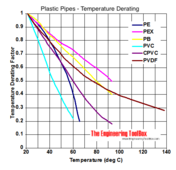Michelle Konzack
New Member
Good day Off-Grider,
I live in Estonia Off-the-Grid and I am co-owner of a small organic farm
We have rough climate up to -40degC and last year, many of out pre-grown plants died in June (!!!) when we got MINUS Temperatures.
My Farm was not the only one, because an apple farm with several ha has lost all Flowers, hence no fruits in Autumn.
Hence I want to build a WInter-Greenhouse which is roughly 17x7,2m in size (maybe even 4,3m longer).
The Solarpanles (550Wp or 650Wp) are mounted on the very most top.
I will use a Fronius Symo 10kW with a Fronius OhmPilot 9kW and as well a Fronius EnergyMeter which sit directly in front of the ACout of my VictronSystem and should prevent overloading my Victron MultiPlus-II Inverters.
I have plans to dig the Ground under the Greenhouse at least 4m deep out and put 400-500m HDPE Pipes 40x2,4 PN4 (they are specially used for Ground-Water Heating Systems) into and then fill it up with so much sand, that the top level is 1m under the ground, because the Greenhouse is 1m sunken in the ground.
The HeatStorrage will be low temperature, hence only 50-60degC, which hold mostly enough energy to take me over the month from October to January and maybe even February, because my existing 1,9kWp plus new 5,4kWp plus the 10kW Fronius produce in October still so much Energy that I can easily heat electic (Underfloor Heating System) without using my BrickStove. The same count for February already.
Hence, I have to get over November to January and I want it clean.
In addition it would also allow me to go into vacancies, what I currently can not do.
Now it comes where I need help:
What kind of insulation should I use on top of the HeatStorrage?
Ordinary EPS300 with two layers of 100mm would probably not work because EPS is starting structural changes at 60degC and disintegrating at 70degC
What are your oppinions and suggestions?
Thanks in advance
Michelle
Note 1: Polar Night Energy does something similar, but with 600degC
Note 2:
My new 12 Solarpanels LONGI 455Wp cost only 1368€ and the prices for the 550Wp ones are 137€ and the 650Wp only 162€. And this are prices from Estonia!
Hence it make sense to buy them (I think onbuying a whole pallet of 36 and respectiv 31 modules)
I live in Estonia Off-the-Grid and I am co-owner of a small organic farm
We have rough climate up to -40degC and last year, many of out pre-grown plants died in June (!!!) when we got MINUS Temperatures.
My Farm was not the only one, because an apple farm with several ha has lost all Flowers, hence no fruits in Autumn.
Hence I want to build a WInter-Greenhouse which is roughly 17x7,2m in size (maybe even 4,3m longer).
The Solarpanles (550Wp or 650Wp) are mounted on the very most top.
I will use a Fronius Symo 10kW with a Fronius OhmPilot 9kW and as well a Fronius EnergyMeter which sit directly in front of the ACout of my VictronSystem and should prevent overloading my Victron MultiPlus-II Inverters.
I have plans to dig the Ground under the Greenhouse at least 4m deep out and put 400-500m HDPE Pipes 40x2,4 PN4 (they are specially used for Ground-Water Heating Systems) into and then fill it up with so much sand, that the top level is 1m under the ground, because the Greenhouse is 1m sunken in the ground.
The HeatStorrage will be low temperature, hence only 50-60degC, which hold mostly enough energy to take me over the month from October to January and maybe even February, because my existing 1,9kWp plus new 5,4kWp plus the 10kW Fronius produce in October still so much Energy that I can easily heat electic (Underfloor Heating System) without using my BrickStove. The same count for February already.
Hence, I have to get over November to January and I want it clean.
In addition it would also allow me to go into vacancies, what I currently can not do.
Now it comes where I need help:
What kind of insulation should I use on top of the HeatStorrage?
Ordinary EPS300 with two layers of 100mm would probably not work because EPS is starting structural changes at 60degC and disintegrating at 70degC
What are your oppinions and suggestions?
Thanks in advance
Michelle
Note 1: Polar Night Energy does something similar, but with 600degC
Note 2:
My new 12 Solarpanels LONGI 455Wp cost only 1368€ and the prices for the 550Wp ones are 137€ and the 650Wp only 162€. And this are prices from Estonia!
Hence it make sense to buy them (I think onbuying a whole pallet of 36 and respectiv 31 modules)



